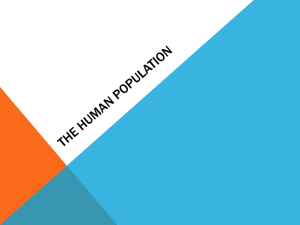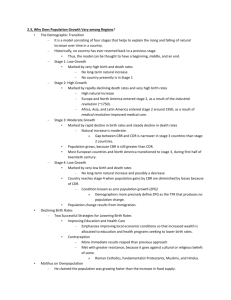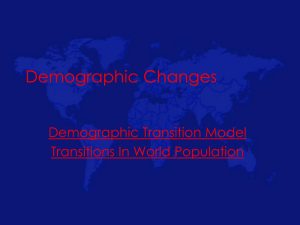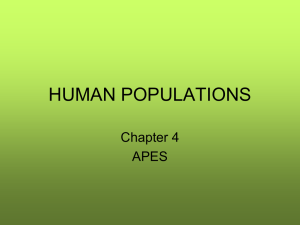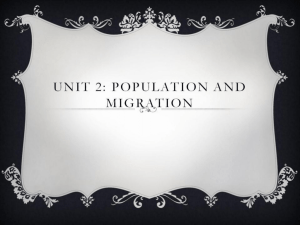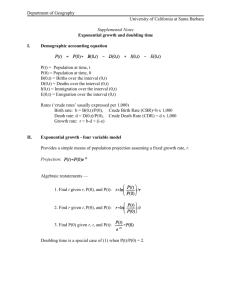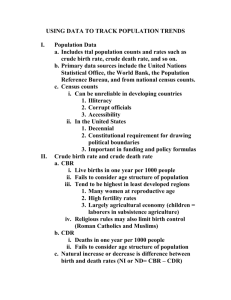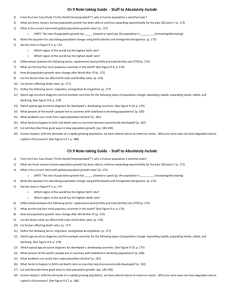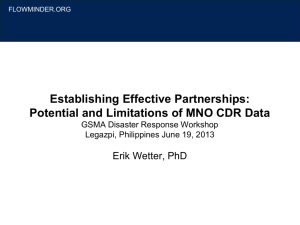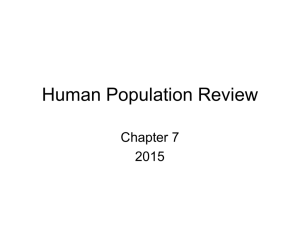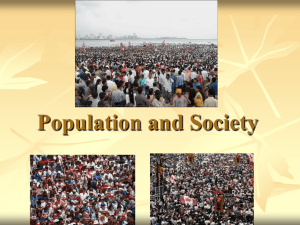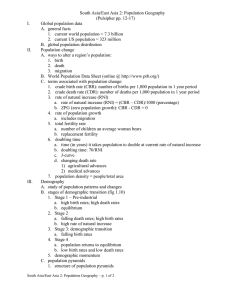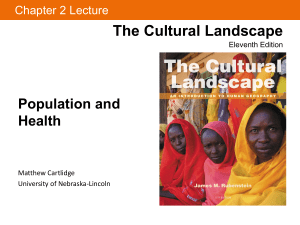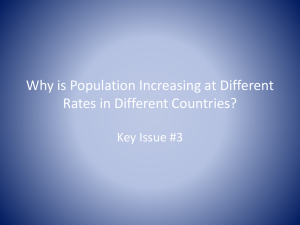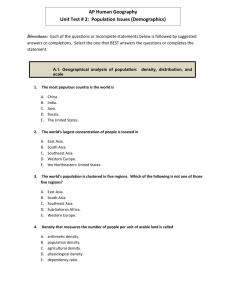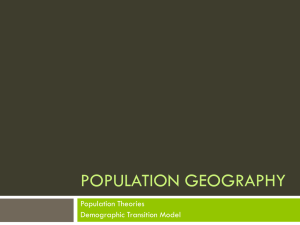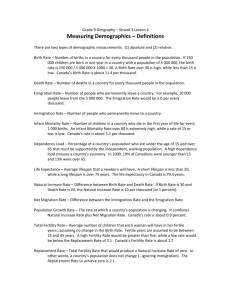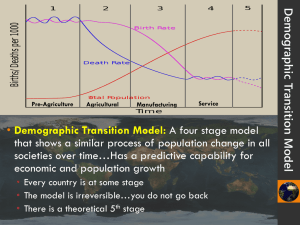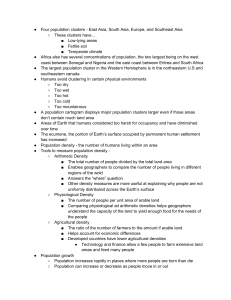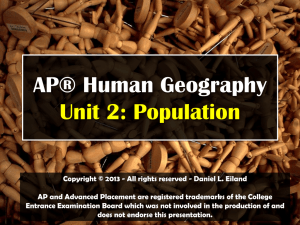Current Human Population Growth and Implications
advertisement
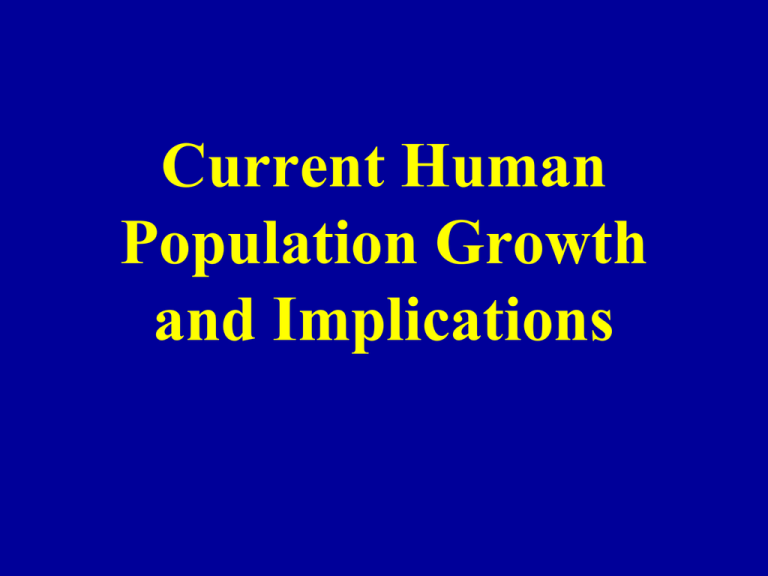
Current Human Population Growth and Implications Human Population History Factors Contributing to Population Explosion • Agricultural advances • Advances in medicine • Industrial revolution Reasons for exponential growth of human population • Increased food supply • Improvements in medical and public health and technology • Improvements in sanitation and personal hygiene • Safer water supplies Thomas Malthus • Studied the decline of living conditions in 19th century England • Blamed this decline on: – Too many children – Inability of resources to replenish at levels with increased population – Irresponsibility of lower class • Proposed regulating family size of lower class to limit it to a level they could support Malthus continued • He said “positive checks” like food shortages and disease kept population at appropriate levels • He said population growth was exponential but food production could not keep growing exponentially. • As of today, he was wrong due to GM foods. Current Stats • World Population: 6.6 billion people • U.S. Population: 295 million people • Kentucky Population: 4.1 million people • Louisville Population: 500,000 people • The U.S. is only 5% of the world’s population, but we use ~ 1/3 of the Earth’s natural resources!!! Crude Birth Rate and CDR • CBR= the number of live births per 1000 members of the population in one year. • CDR= the number of deaths per 1000 members of the population in one year. • When calculating population change you must take into account total population size when using CDR and CBR. Population change= (CBR+ immigration) – (CDR + emigration) • Example: If the population is 50,000 and the number of births is 14 per 1000 and the number of deaths is 5 per 1000, what was the population change assuming no net immigration or emigration? Alarming Facts… • The human population is currently growing at a rate of 260,000 people per day! • Every 3 years, the global environment must support another 285 million people As a result of rapid growth… • 1.3 billion people are impoverished • 841 million people are chronically malnourished • Supplies of water for irrigation are declining • Nearly half of the Earth’s land mass has been changed by human activity • Ocean fish stocks are depleting • Species are going extinct faster than ever Earth’s Carrying Capacity (2billion-30billion) • Determined by – Food production – Living space – Waste assimilation – Resource availability • Can be expanded through advances in – Agriculture – Industry – Medicine Accomodations To accommodate greater populations, many policies would have to be implimented: Massive recycling Driving restrictions Restrictions on the transport of food Prohibitions against cutting trees on one’s property Limitations to burning of fossil fuels Fertility rates • Replacement level fertility (RLF)= having enough kids to replace yourself – Slightly higher than 2 (2.1) b/c some kids die • Total fertility rate (TFR)= average number of children a woman will have in her lifetime – Many factors affect like urbanization, education, contraceptives and abortion availability Indicators of overall human health: • Life expectancy • Infant mortality rate Other factors that affect population growth • • • • Policies to encourage immigration Environmental refugees Religious persecution Baby boom generation in US – Why they are waiting to retire – How their retirement will affect the rest of us Demographic Transition • Pre-industrial= little to no growth (African nations) • Transitional= rapid growth (Mexico, Pakistan) • Industrial= stable growth (china) • Post-industrial= declining growth (Japan, Russia, Germany) Why are developing countries like India not moving toward Industrial stage? • Most people are poor. Money is kept to few in the country. Age Structures and what they tell us about future population growth: • What would a stable population age structure look like? • What would a declining population age structure look like? Ways to lower population growth: • Provide economic incentives for having fewer children • Empower and educate women • More education means more money for work which mean less children are needed to take care of parents • More education usually means having children later in life which usually means having less children Cont. • Family planning including contraceptives, legal abortions • Improve prenatal and infant health care (need less kids if they survive) China and India as case studies on family planning • What do you think of these interventions? What do you think? • What is the US’s role (thus the taxpayers role) in other country’s population control?
